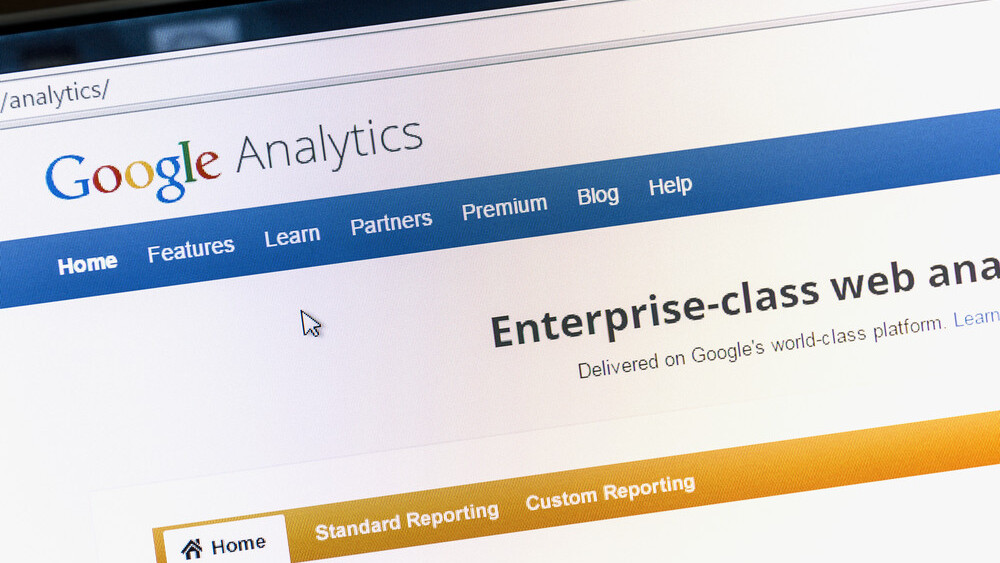
In this series of blog posts, I’ve enjoyed shedding some light onto how we approach marketing at The Next Web through Web analytics, Search Engine Optimization (SEO), Conversion Rate Optimization (CRO), social media and more. This piece focuses on how, why, when and with what we track data.
The basics of every marketing decision of course needs to be around having the data available to make a judgment call. That’s why our web analytics setup is so important to us and why we spend quite a lot of time on it. In previous blog posts we’ve written about our A/B testing tools and process. Its data is also powered by this.
What tools are we using for our web analytics?
At the moment we’re using a couple of tools to track the performance of The Next Web. Our main web analytics package is Google Analytics (Premium) as it makes sure we can track every inch of our site. Since December 2015 it’s running through Google Tag Manager (we might write about this switch later and why we decided to go with GTM).
And why pay for Premium? The free version of Google Analytics is limited to send only 10 million hits a month and it wasn’t good enough for us. We decided to look for an ‘alternative,’ but after a brief evaluation of the other tools, we quickly came to the conclusion that Google Analytics Premium was the best option out there. Currently supported by our agency Maxlead, we’re more than happy that we made the switch as it allows us to send up to 1 billion events monthly.
As Google Analytics isn’t the best for real-time analysis or dashboarding (with custom dimension data), we work with Parsely as well.
How has our setup changed over the years?
We’ve always used Google Analytics. We get a lot of people asking if we want to use tools built by startups to track our performance for certain parts of the site, but currently we try to stick to GA as the load time and support would be influenced by any decision we make here. Also GA now allows us to export the data very easily with Reporting, Reporting API and Google BigQuery, making it hard to battle with other tools.
Do you want some examples?
We know which editors attract more page views on our site in a certain month than others. Default reports wouldn’t provide you with this information, that’s why we send this data through custom dimensions to Google Analytics to get more insights into their performance.
Another example are timezones: Google Analytics isn’t really good at reporting the timezones of it’s users and that’s why we send the current timezone of the user. Traffic at 4pm might be higher, but I’d like to know what that means, a user in the US online at 10am or someone browsing in India at night.
And what about the scroll depth on a certain page? Are you going down to 80 percent of the page or are you stopping after 2 paragraphs? We send this data on a 10 percent basis to Google Analytics to get insights into what content you read completely and what you don’t.
Want to see more use cases?
Download the Google Analytics debugger in order to see via your console what kind of data we send based on the interactions you have on our pages.
It’s very safe because the data we save doesn’t contain any personal identifiable information – we can’t follow any information back to a specific user. The tools we use don’t allow it and we don’t need to connect it with user data, we have other systems in place where we can connect data to a user ID if we need to.
How do we see the future of tracking data for The Next Web?
‘Adding Intelligence’
We’ll always want to track useful data around the behavior of our users so we can improve what we’re doing.
Right now we’re working on the integration of additional data sources to improve our customer analytics. Because why bother you with emails about our conferences if we already know that you’ve bought a ticket for one of our upcoming events?
Our goal is to increase the effectiveness of the campaigns we run so we don’t have to annoy users with things they don’t want to know.
‘Reporting or Dashboarding’
The different teams in the company get support from the analytics team in order to improve their work. That’s why they work together continuously in order to see what kind of other data they need so they can make better decisions for clients. No ‘oldskool’ reporting here luckily, but useful insights that are send automated to the right people or clients.
In the next blog post I’ll provide more insights into what our Google Tag Manager setup looks like, why we decided to move there and what more it brings us than our previous setup.
If you missed the previous posts in this series, don’t forget to check them out: #1: Heat maps , #2: Deep dive on A/B testing and #3: Learnings from our A/B tests, #4: From Marketing Manager to Recruiter, #5 Running ScreamingFrog in the Cloud and #6 What tools do we use?
This is a #TNWLife article, a look into the lives of those that work at The Next Web.
Get the TNW newsletter
Get the most important tech news in your inbox each week.





